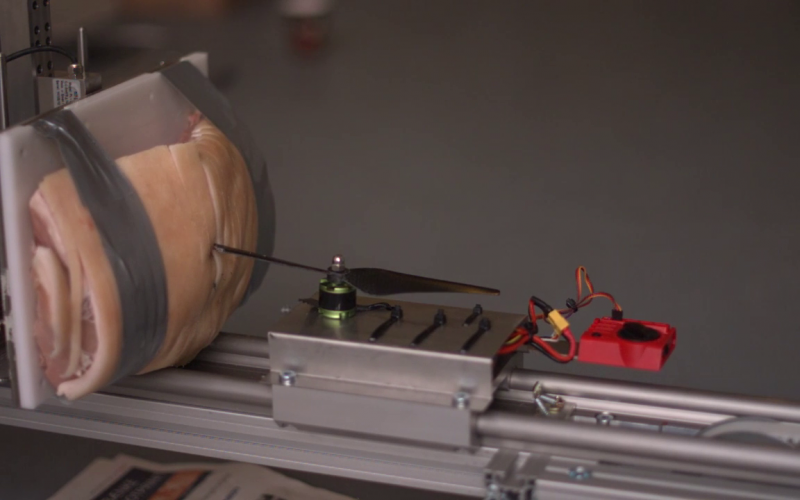Research catapult tests the dangers of drones

At Aalborg University's Drone Research Lab, a new experimental setup with a motorized catapult and high-speed camera now documents in detail what happens when one of the popular small hobby drones hit objects or people. In the first film from the lab, drones are sent on a collision course with a pork roast.
"The objective is to examine the consequences when different kinds of drones hit people, animals, cars, glass panes and other obstacles they may encounter in their path. With a high-speed camera and precise measurements of both the speed and the force of the collision, it is possible to assess the damage that may occur," says Anders la Cour-Harbo, director of the drone lab.
The catapult was built by the university specifically for this type of experiment and it is still in the testing phase. The videos show the very first experiments for adjusting the mechanics and electronics of the catapult. In addition, researchers are still working on optimizing the light and camera setup, so registration will be as good as possible.
"The first attempts are interesting because they clearly show what could happen when a regular hobby drone hits a human being. But it's too early to conclude anything," says Anders la Cour-Harbo. Particularly in the tests simulating collisions with people, it is necessary to do it absolutely right and verify that the results are reliable. The university is thus working with Aalborg University Hospital to conduct experiments that can help us better understand how dangerous drones really are.
The actual catapult is nearly three meters long and built of aluminum. The slide is pulled by an electric motor. It can accelerate a 1-kilogram drone up to 15 meters per second and the collision is filmed with a high-speed camera with over 3000 frames per second. The force of impact is measured over time as this is important for the extent of the injury. Once the researchers get more experienced, the plan is to upgrade the catapult for larger drones and higher speeds.
Provided by Aalborg University




















